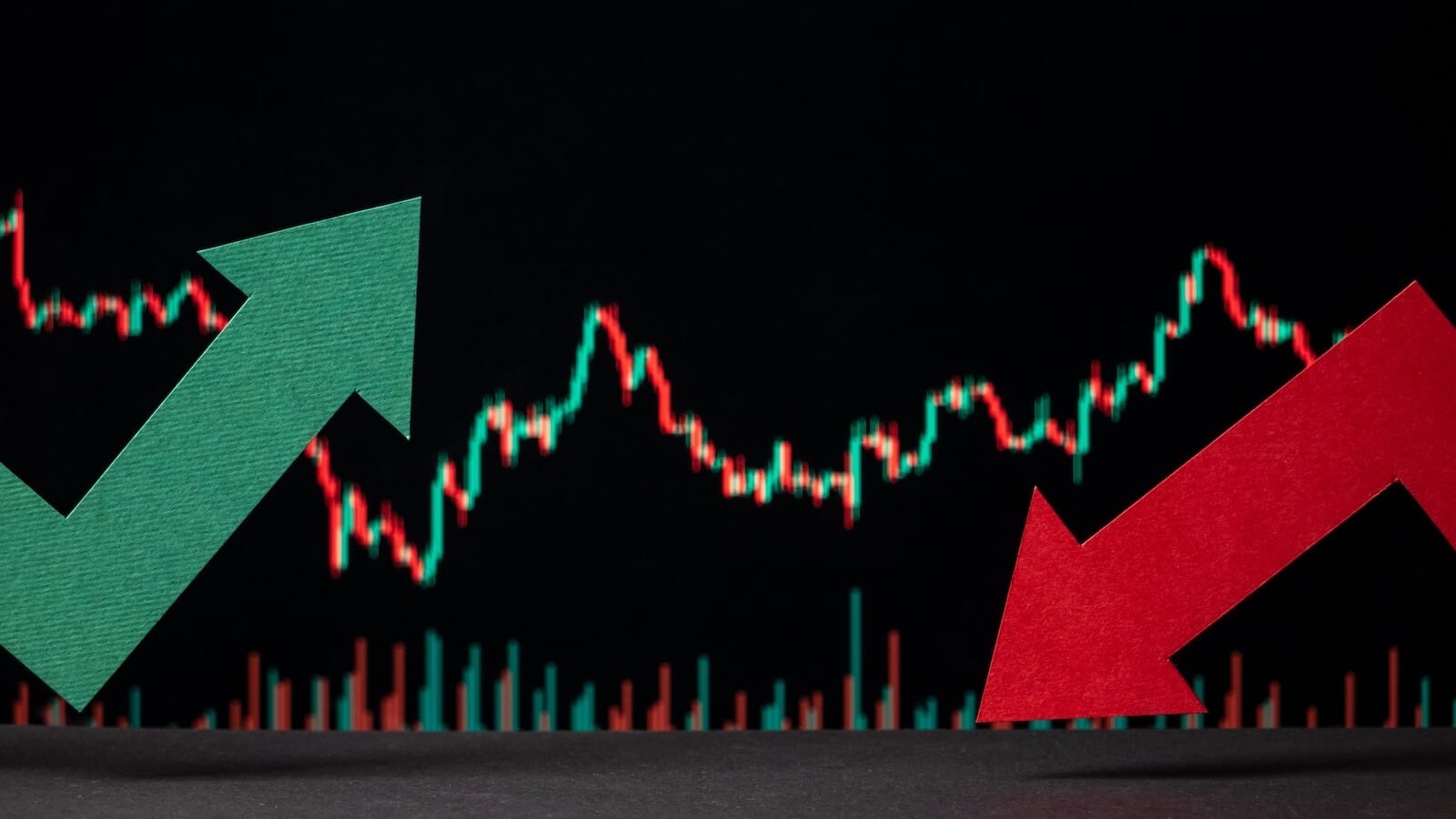DON'T CONFUSE SHORT-TERM COMMENTARY WITH LONG-TERM ANALYSIS -- DAILY TREND SIGNALS ARE ONLY MINOR RIPPLES IN MAJOR TREND -- NBER ANNOUNCES THAT RECESSION STARTED A YEAR AGO -- WE DON'T HAVE THE LUXURY OF WAITING A YEAR TO MAKE DECISIONS
DON'T CONFUSE SHORT- AND LONG-TERM TRENDS... I get the impression from recent feedback that some of our readers aren't clear about terms like "short-term" and "long-term" in describing market trends. It's important not to confuse the two. So let's get back to basics and review those definitions. Market trends are generally divided into three categories: major (long-term), intermediate, and short-term. If you consult the definition of "trend" in the Chart School Glossary, you'll see that the major trend usually lasts for more than a year. Since the stock market peaked in October 2007, the current downturn is "major" in scope. Major trends are usually shown on monthly charts as in Chart 1. That chart shows three major (long-term trends) in the eight years since 2000. A two-year downtrend from 2000 to 2002, a five-year uptrend from 2003 to 2007, and a one-year downtrend since then. Monthly indicators measure the market's major trend. The monthly MACD lines (above Chart 1) have given only three major signals in the last eight years -- a major sell in 2000, a major buy in 2003, and major sell at the end of 2007. That indicators tells us that the "major" or "long-term" trend is still down. The major trend is by far the most important because it overrides signals on weekly and daily charts.

Chart 1
INTERMEDIATE TRENDS LAST ONE TO SIX MONTHS ... Intermediate trends represent corrections to major trends and generally last from one to six months. They're usually measured on weekly charts. The weekly bars in Chart 1 show an "intermediate" bounce from March to May of this year. The bounce lasted 10 weeks before turning back down again (about two months). In addition, the intermediate bounce retraced a half of the previous downtrend from October to March. That's pretty typical. Intermediate signals aren't as important as monthly signals, but are more important than daily ones. The weekly MACD lines, which turned bearish last October, turned positive in late March during the intermediate rally before turning bearish again during June. They've been bearish ever since. The least important trend is the "short-term" variety.

Chart 2
SHORT-TERM TRENDS LAST LESS THAN A MONTH ... Short-term term trends, which are generally shown on daily charts, usually last less than a month. In many cases, they may last for only a week or two. The daily bars in Chart 3 show a number of short-term bounces over the last six months. The rally during July and August lasted a month as did the "triangle" formation during October (see boxes). The triangle formation was composed of two short bounces that lasted about a week each. The latest bounce has lasted a week. One of the ways to determine if a short-term bounce is turning into an intermediate rebound is the market's ability to climb over its 50-day moving average (blue line). That hasn't happened yet. The daily MACD lines have turned positive reflecting the recent bounce. One way to filter that short-term signal is to apply weekly MACD lines to daily charts as shown in Chart 4. You can multiply the daily MACD values of 12, 26, 9 by five to turn them into weekly values. Simply change the three numbers to 60, 130, 45. Chart 4 applies those "weekly" MACD values to S&P 500 daily bars since June. Readings below the zero line mean that the "intermediate" trend is down. The histogram fell below zero in late June and is still in negative territory. The August rally attempt failed at the zero line. As I explained yesterday, the recent rise in the "weekly" histogram bars show some loss of downside momentum. But it's still a very long ways from issuing a weekly buy signal. Applying weekly values to daily charts helps keep short-term bounces in perspective.

Chart 3

Chart 4
IN THE LONG-TERM WE'RE DEAD -- BUT WE LIVE IN THE SHORT-TERM ... John Maynard Keynes became an economic icon during the 1930s by writing about how government spending can help end economic downturns. When asked if his policies were too short-term oriented, his famous answer was that "we're all dead in the long term". While he's right about that, it's also true that we live in the "short-term". Since little or nothing changes in the market's long-term trend on a day-to-day basis, it's often necessary for us to focus on the market's short-term trend. That's all that really changes on a day-to-day basis. The problem with doing that is that some of our readers confuse "short-term" market comments with opinions on the market's "long-term" trend. That's why I use the term "short-term" as often as possible in my market messages. If we didn't write about those short-term trends, there wouldn't be anything to write about. Please keep that in mind, and our short-term comments in perspective, when reading our market messages. You should also make it a point to keep a close eye on your own weekly and monthly charts. Stockcharts provides you with all the tools to do that.

Chart 5
RECESSION STARTED A YEAR AGO ... It must be nice being a member of the National Bureau of Economic Research. All you need to do is look back and tell us what happened in the past. The NBER announced yesterday that a recession started in the U.S. in December 2007. That's nearly a year ago. That was right around the time that the major market indexes started flashing major sell signals (Chart 5). Chartists like us didn't need to wait a year to see that. That makes the current recession nearly 12 months old. The longest post-war recessions (1973-1974 and 1980-1981) lasted 16 months. I suspect this one will last longer than either of those. Given all of the recent comparisons to the Great Depression, one market observer suggested calling the current downturn the Great Recession. I like that better. The downturn during the 1930s lasted 34 months. Unlike the NBER, we don't have the luxury of looking back a year to make market decisions. We have to make investment decisions based on what we see today. The best way I know how to do that is with charts of the various financial markets. That's what Stockcharts is here for.










